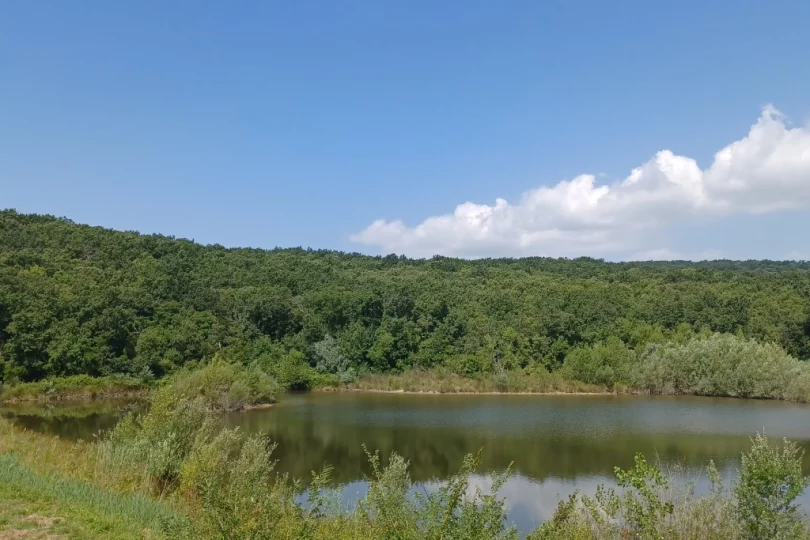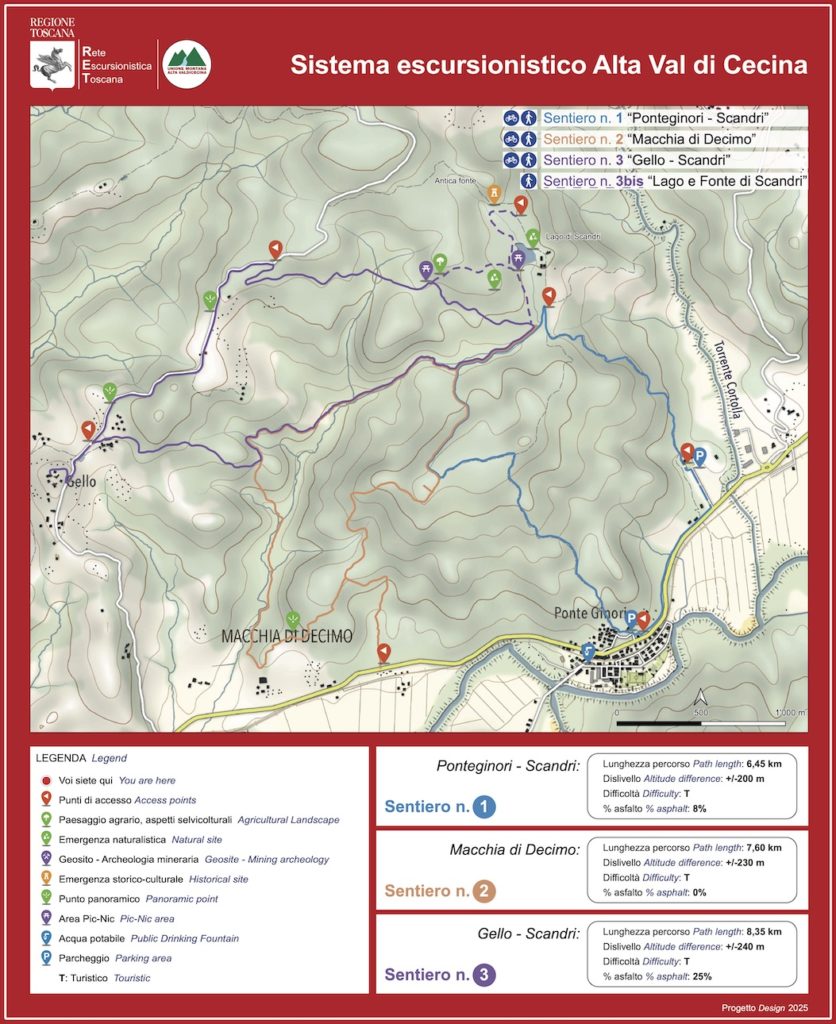“Macchia di Decimo” Complex
The “Macchia di Decimo” Regional Forest Complex, managed by the Unione Montana Alta Val di Cecina, is located in the municipality of Montecatini Val di Cecina and covers a total area of approximately 842 hectares, of which 695 are coppice woodland, 143 are high forest, and the remainder consists of shrubland.
The forest stretches across the hills adjacent to the plain of the Cecina River on the right bank, and lies between the Cecina River and the Cortolla stream, with the Decimo brook significantly dividing it into two sections.
The complex is characterized by two prominent hilly ridges extending in a NE–SW direction. The first ridge is bordered by the Sant’Ippolito and Decimo brooks, reaching a maximum elevation of 325 meters above sea level. The second ridge is enclosed by the Decimo brook, the Cecina River, and the Cortolla stream, with its highest point at Monte Cuccheri (257 meters above sea level).
The “Macchia di Decimo” Regional Forest Complex, managed by the Unione Montana Alta Val di Cecina, is located in the municipality of Montecatini Val di Cecina and covers a total area of approximately 842 hectares, of which 695 are coppice woodland, 143 are high forest, and the remainder consists of shrubland.
The forest stretches across the hills adjacent to the plain of the Cecina River on the right bank, and lies between the Cecina River and the Cortolla stream, with the Decimo brook significantly dividing it into two sections.
The complex is characterized by two prominent hilly ridges extending in a NE–SW direction. The first ridge is bordered by the Sant’Ippolito and Decimo brooks, reaching a maximum elevation of 325 meters above sea level. The second ridge is enclosed by the Decimo brook, the Cecina River, and the Cortolla stream, with its highest point at Monte Cuccheri (257 meters above sea level).
The entire forest complex is dominated by broad-leaved woodlands, representing both Mediterranean and sub-Mediterranean vegetation. It includes mainly evergreen oak formations—holm oak woods and tall shrubland—as well as thermophilous/mesothermophilous broadleaved trees such as downy oak and Turkey oak.
The wildlife present in the “Macchia di Decimo” complex ranges from porcupines and badgers to the regular presence of foxes, wild boars, and roe deer.
Unlike the Berignone, Monterufoli or Caselli complexes, which are more nature- and recreation-oriented, the Macchia di Decimo complex is primarily production-oriented.
In this context, the Macchia di Decimo complex can be defined as a “young” forest area where one can observe aged but still relatively young woods compared to those in the nearby nature reserves—yet still boasting considerable biodiversity.
The entire forest complex is dominated by broad-leaved woodlands, representing both Mediterranean and sub-Mediterranean vegetation. It includes mainly evergreen oak formations—holm oak woods and tall shrubland—as well as thermophilous/mesothermophilous broadleaved trees such as downy oak and Turkey oak.
The wildlife present in the “Macchia di Decimo” complex ranges from porcupines and badgers to the regular presence of foxes, wild boars, and roe deer.
Unlike the Berignone, Monterufoli or Caselli complexes, which are more nature- and recreation-oriented, the Macchia di Decimo complex is primarily production-oriented.
In this context, the Macchia di Decimo complex can be defined as a “young” forest area where one can observe aged but still relatively young woods compared to those in the nearby nature reserves—yet still boasting considerable biodiversity.
Exploring the trails of the Macchia di Decimo complex is full of surprises: whether it’s a quiet bike ride along the easy trail network or a more demanding hike for trekking enthusiasts, it always proves to be a pleasant and stimulating experience.
Source: Technical Office – UMAVC
Exploring the trails of the Macchia di Decimo complex is full of surprises: whether it’s a quiet bike ride along the easy trail network or a more demanding hike for trekking enthusiasts, it always proves to be a pleasant and stimulating experience.
Source: Technical Office – UMAVC


